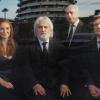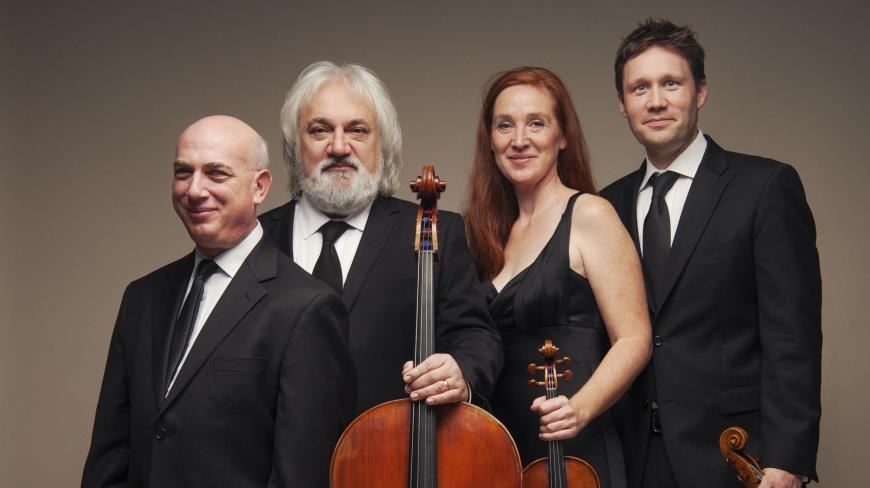
Following in the musical footsteps of the much-lauded Hollywood String Quartet, the ensemble founded in 1939 by violinist-conductor Felix Slatkin and considered the first internationally renowned American chamber music group, the New Hollywood String Quartet (NHSQ) has been dazzling audiences since its debut concert in 2001.
Each of the NHSQ’s members has an impressive pedigree. Violinist and founding member Rafael Rishik was one of the youngest students, at age 6, ever accepted to The Juilliard School and also knew the Hollywood String Quartet’s second violinist, Paul Shure. Violinist Tereza Stanislav, with the NHSQ since 2014, is assistant concertmaster of Los Angeles Chamber Orchestra (LACO). Violist Robert Brophy, a member since 2006, often plays with the Los Angeles Philharmonic. And Andrew Shulman, who also joined in 2006, is principal cellist of LACO.
The NHSQ, along with a bevy of guest artists, is presenting its Summer of Paris Chamber Music Festival July 6–9 in the Pompeian Room of the Doheny Mansion in Los Angeles, in partnership with The Da Camera Society, which was established in 1973 to offer chamber music in intimate salons and historic spaces. The four evenings will feature 16 works that showcase the music of Claude Debussy and Maurice Ravel.
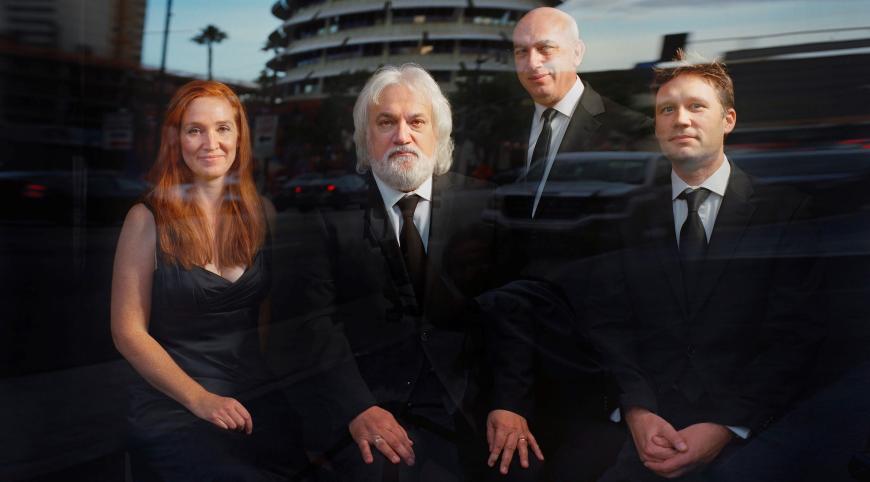
Among the many offerings are Debussy’s Piano Trio in G Major and his Sonata for Cello and Piano in D Minor, while the Ravel works include the Piano Trio in A Minor and Chansons madécasses (Madagascan songs) for voice, piano, flute, and cello — a set of three exotic art songs written in 1925 and 1926 to the poetry of Évariste de Parny, here featuring mezzo-soprano Jessie Shulman.
This festival is the fourth since the group’s smashingly successful 2019 Summer of Brahms Festival, which the Quartet offered as part of its ongoing residency for the South Pasadena Library’s Restoration Concert Series. Speaking by phone from her home in Los Angeles, Stanislav said that the choice of this year’s all-French program by two masters was simple: “We all love their music. It’s incredibly beautiful and also has a wide array of instruments.
“The chamber music involves many different combinations,” added Stanislav, “and we thought it would be interesting putting them next to each other. French impressionist composers get lumped together quite often, but when they’re next to each other, the music is quite different. I think the programs are beautiful. There are so many sonatas, trios, and virtuosic violin pieces, [as well as] a song cycle. We’re excited about it.”
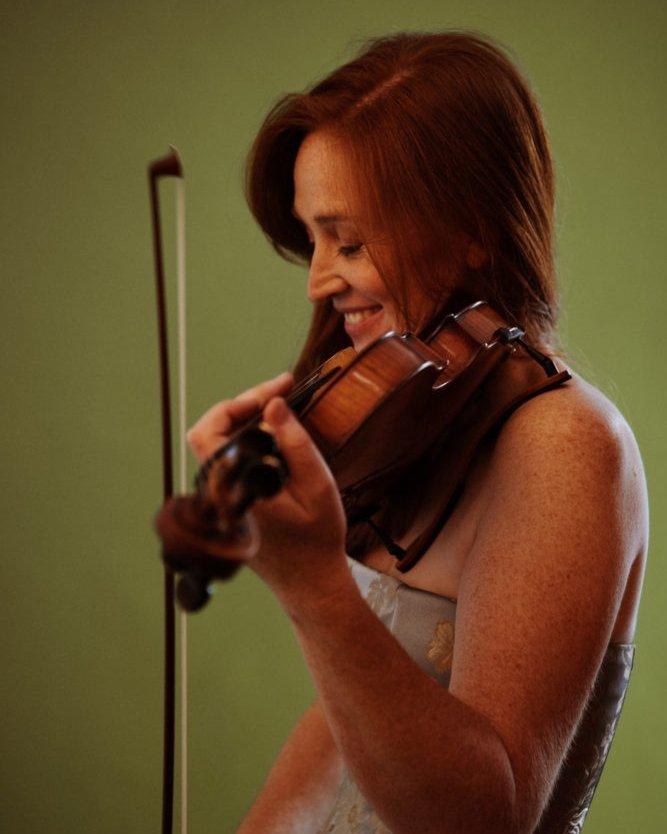
Cumulatively, the NHSQ members have recorded hundreds of film scores, and they have decades of chamber music experience between them. The Quartet was featured on Gernot Wolfgang’s Grammy-nominated disc Passing Through (2016), performing the composer’s String Theory, and can also be found on Jeff Beal’s 2022 album The Paper Lined Shack.
The lineup of formidable guest artists for the Summer of Paris includes pianists Fabio Bidini, Julio Elizalde, and Rohan De Silva; violinists Roger Wilkie and Corey Cerovsek; flutist Denis Bouriakov; and clarinetist Boris Allakhverdyan. Harpist Marcia Dickstein will appear in Debussy’s Sonata for Flute, Viola, and Harp and Ravel’s Introduction and Allegro. The latter, a 1905 piece for harp, flute, clarinet, and string quartet, will close the festival.
Stanislav recalls the success of the Summer of Brahms series, which featured performances of all 25 of the composer’s instrumental chamber works. “It was absolutely exhausting, but it was incredible. We had eight consecutive concerts, and it was sold out. To our knowledge, nobody had done that before. Then we did the holiday concerts in December 2021 at The Huntington [Library], and last summer we collaborated with The Da Camera Society for the Beethoven [programs] at the Doheny Mansion.”
Choice of venue is crucial, and Stanislav explained that there are several factors. “The most important is acoustics and that it’s a size we feel comfortable with. We also look for a place that’s willing to work with us without prohibitive costs. The Pompeian Room proper seats about 100, [and] we found a way throughout the mansion, because it’s all quite open, that there’s also a nice choice of seating.
“There are many different rooms,” she continued, “and you can hear quite well. You can sit in the room with the musicians or sit further away and look at art. The room [itself] is beautiful. It has a big dome in the middle, and the light filters through some beautiful stained glass.”
With the Quartet always thinking ahead to the next festival, Stanislav pointed out that the group’s choice of programming starts about a year in advance. “It’s very much a collaborative effort between the four of us. We all pitch in our ideas and eventually whittle them down. Once we have the programs, then we invite colleagues that we’re excited about.”
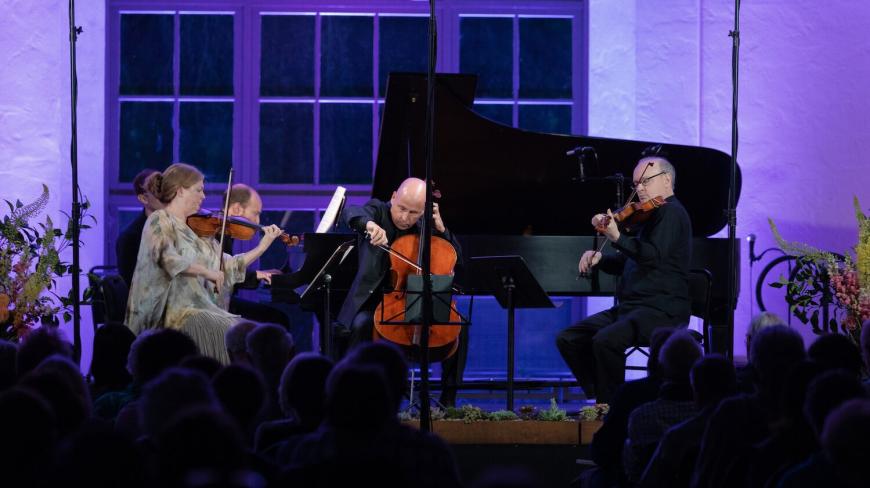
No theme has yet been selected for next year’s festival, but for the Debussy/Ravel concerts, Stanislav said she expects to see familiar faces in the audience. “It is a very personal experience, and they come to us from different [places]. Some enjoy LACO, some only go to string quartet concerts, some enjoy all types of chamber music in L.A., so I would call them fans.”
Stanislav is married to violist Brophy, who also plays with Los Angeles Opera and in numerous West Coast chamber music series. The couple met some years ago at Rice University in Houston and are now the parents of 8-year-old twins. “We’ve played so much together [that] there’s such a level of comfort. At times it’s complicated, but we’re pretty good at leaving our marriage at the door when we come into rehearsal.”
Regarding the upcoming festival, Stanislav said that she’s interested in audience reactions. “Aside from the absolutely beautiful colors, sonorities, and textures that Ravel and Debussy were able to put together, I am very curious to talk to people about hearing [the composers] back-to-back and the differences everybody would find in their music. That’s fascinating to me.”


